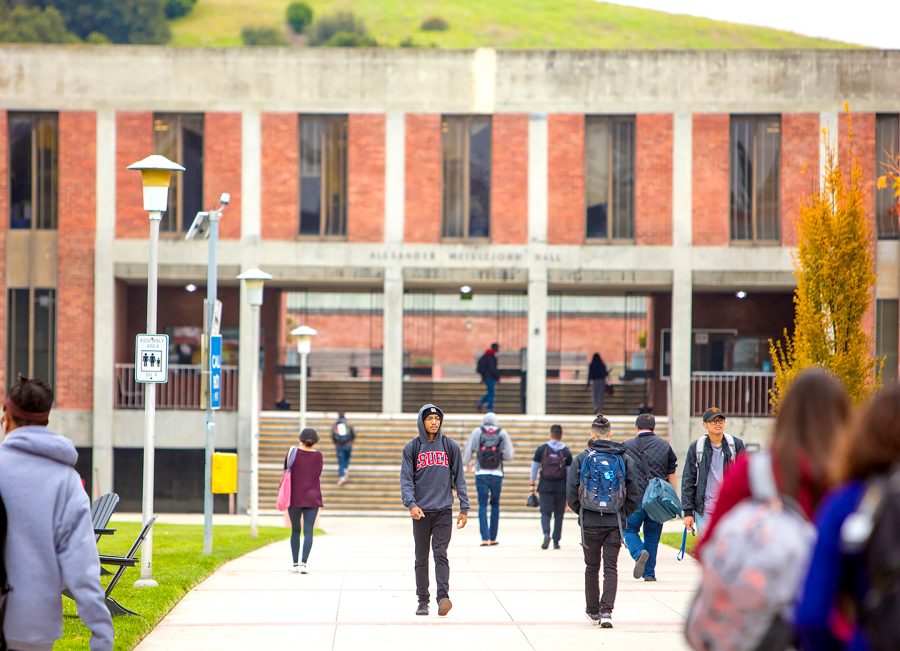Is Campus Secure?
May 10, 2023
The Science Buildings and Meiklejohn Hall Lack Proper Security
School security is essential in creating a comfortable environment for students to thrive in. Universities should be a place free from violence, crime, and any other external factors that may disrupt students. To that end, the University Police Department (UPD) and facility management at California State University, East Bay share the responsibility of maintaining the peace and security on campus.
Despite protocols and staff in place to keep the school grounds safe, some buildings on campus, such as the Science Buildings and Meiklejohn Hall are left unlocked at night, leaving them vulnerable to invasion and damage. Each classroom is locked but the main entrance remains open even at night, allowing anybody free access to these buildings. One of the rooms in the Science Building called “The Cave” is also left open 24 hours. No staff is left inside these buildings to monitor who comes in and out. Some students have reported sightings of homeless individuals staying beyond class hours in these buildings while vacant.
Despite UPD’s effort to patrol campus at night, it is still quite difficult for them to determine whether someone has entered these buildings. In a nutshell, some university facilities still keep some of their buildings open indefinitely, leaving a chance for the buildings to be invaded and possibly used for malicious activity unbeknownst to the
university staff.
Kimberly Hawkins, the News and Information Manager at CSU East Bay, commented on behalf of the UPD.
In her statement to the Pioneer, Hawkins said: “Creating a safe and secure campus is a top priority at Cal State East Bay. The Facilities Development and Operations Department along with the University Police Department (UPD) work closely to ensure a healthy and safe educational and professional environment.
All campus facilities are key-accessed and most are open daily for scheduled campus community use. Access to campus buildings is restricted during non-business hours.
The Housing and Residential Life Complex has a policy requiring residents to ensure that all doors allowing access to residential buildings remain closed when not in use.
Regular inspections and surveys of campus indoor/outdoor lighting, shrubbery, and walkways are conducted. The University participates in Crime Prevention through Environmental Design concepts for planning and improvements on campus.
Nationwide, college campuses are some of the safest places to be and Cal State East Bay is no exception. That being stated, we are not immune to the issues that affect the Greater Bay Area region we serve. While UPD serves and protects the members of our community, the extent to which we are safe is dependent on each member of our campus community taking responsibility to protect themselves and others.
We encourage our members to be vigilant and to report any suspicious activities. We urge members to abstain from propping doors open for friends or classmates, further comprising the efforts to secure the building. We must work together.
Our safety and security infrastructure including technology, protocols, staffing, and training are regularly assessed. Plans are in place to ensure that in the event of an emergency, the proper actions are being taken to mitigate the impact on our campus community. Cal State East Bay encourages all students, staff, faculty, and visitors to report any suspicious or dangerous behavior to UPD immediately. There are resources available on their website and in person.”
Although Hawkins expressed a positive attitude toward campus security, she did refrain from answering our questions directly. Regarding the specific reason(s) for having unlocked doors and the necessary measures for improving school security, Hawkins responded, “I am not going to speculate.”
To ensure a safer campus, it is imperative that our university prioritize security and take concrete measures for solving current issues. On behalf of students and staff, our university should analyze the potential risk that insufficient security may pose for our campus community.

















